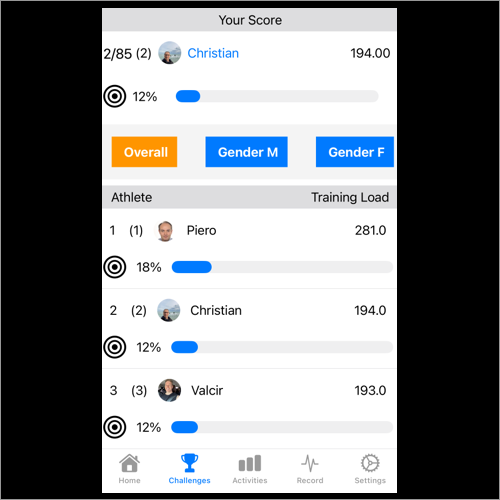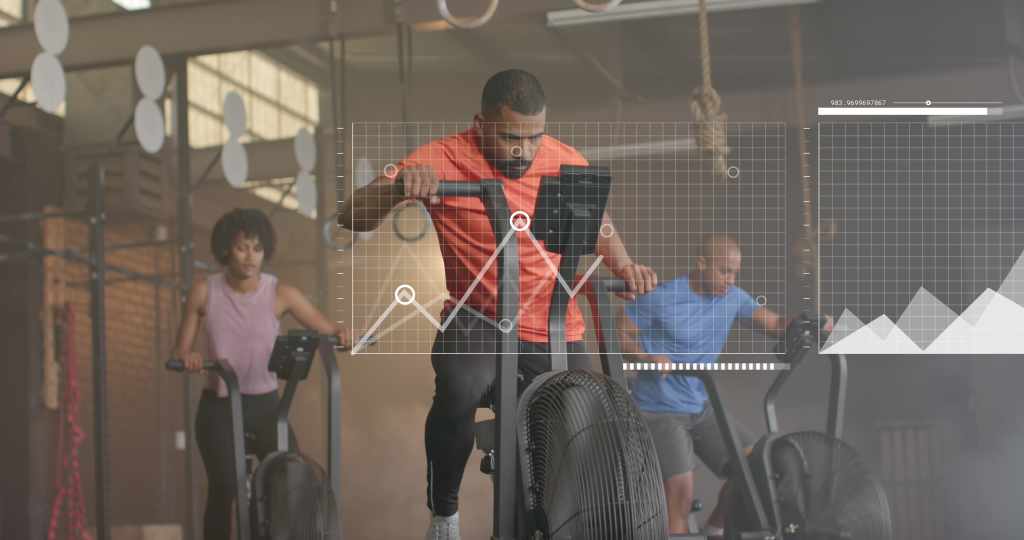In the ever-evolving fitness landscape, keeping clients motivated, engaged, and committed to their wellness journey is no easy feat. At SELFLOOPS, we understand the power of community-driven motivation, so we’ve launched a powerful tool to inspire and drive engagement in fitness communities: the SELFLOOPS Challenges.
SELFLOOPS Challenges are designed for coaches, gyms, clubs and corporate wellness programs to create meaningful, friendly competitions that encourage healthy habits, improve physical well-being, and foster long-term client engagement. Available on the SELFLOOPS website and the SELFLOOPS Spark app, this new service empowers fitness professionals to design and customize challenges to inspire their clients or athletes, whether they are part of a small group or a large community.

How SELFLOOPS Challenges Work
SELFLOOPS Challenges are versatile, allowing coaches to tailor competitions based on specific goals, timelines, and types of participation. Here’s a closer look at what makes SELFLOOPS Challenges such a dynamic addition to any fitness community.
Customizable Challenge Goals
Each challenge starts with a clear beginning and end date and a goal to achieve. Coaches have flexibility in setting the challenge’s target metric, choosing from a wide range of health and fitness markers:
• Steps: For walking or running-based challenges
• Training Load and TRIMP: Ideal for tracking exercise intensity and recovery
• Calories: To reward energy expenditure
• Distance and Elevation: Perfect for runners, cyclists, and outdoor enthusiasts
• Time Spent Exercising: Motivates clients to log more workout hours
• Number of Activities Performed: Ideal for building consistency in training routines
Coaches can even select specific activities that qualify toward the goal, making it easy to tailor challenges for particular types of workouts or training focus.
Individual and Team Challenges
The SELFLOOPS Challenges can be customized to foster individual or group competition.
• Individual Competitions: Coaches can choose to have clients or athletes compete as individuals, selecting the entire team or just a specific group. Each participant’s results are tracked in real-time, fostering a spirit of friendly rivalry.
• Team Competitions: Coaches, gym owners and companies can bring athletes together in team challenges. These challenges can even be organized by location, where each location accrues points to compete with others. To ensure fairness, scoring can be normalized based on the number of team members, so every team has a chance to win, regardless of size.
Flexible Time Domains with Cyclic Rankings
To add an extra layer of excitement, SELFLOOPS Challenges can include daily, weekly, or monthly rankings within the challenge period. Each cycle has a fresh start, with the rankings reset at the start of the new time period. This structure allows multiple winners and rewards sustained engagement, helping clients build momentum and stay motivated over time.
Personalized Leaderboards: Filter by Gender and Age
We understand that athletes often want to see how they rank among peers with similar backgrounds. SELFLOOPS Challenges offer filtered leaderboards, allowing participants to view rankings based on gender and age. This feature adds a personalized touch, giving athletes an extra layer of insight into their performance within a comparable group.
Benefits of SELFLOOPS Challenges
SELFLOOPS Challenges offer a range of benefits for both coaches and clients:
• Motivation: Structured goals provide clear, measurable milestones to keep clients on track with their fitness journeys.
• Engagement and Retention: Clients are more likely to stay engaged when they have regular challenges to participate in, making it an ideal tool for client retention.
• Community Building: Whether competing against others or as part of a team, challenges foster a sense of camaraderie and connection.
• Healthy Fun: Above all, challenges are designed to be enjoyable, injecting a sense of fun into clients’ fitness routines.

Available Now on SELFLOOPS Spark and the SELFLOOPS Website
SELFLOOPS Challenges are now live and accessible both on our SELFLOOPS Spark mobile app and the SELFLOOPS website. We believe these challenges will be a game-changer for fitness communities everywhere, delivering a seamless way for coaches, clubs, gyms and corporate wellness programs to motivate and connect their clients like never before.
Ready to elevate client engagement, retention, and—most importantly—fun? Start a SELFLOOPS Challenge today and let the healthy competition begin!





